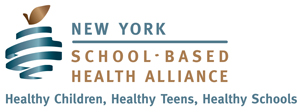Guidance for schools under the federal healthcare assistance program has not been significantly updated in nearly 20 years.
Dive Brief:
- The federal government will issue guidance later this summer to encourage states to support districts’ Medicaid reimbursements for school-based health services, according to a letter to governors posted on the U.S. Department of Education website last week.
- Although states have been able to allow districts to seek reimbursements for school-based health services for all Medicaid-eligible students since 2014 — known as the “free care” policy — only 17 states have made this a practice, according to Sasha Pudelski, director of advocacy for AASA, The School Superintendent Association.
- The anticipated free care guidance to states, along with a long-awaited comprehensive update to Medicaid guidance for schools on how to deliver and receive reimbursement for health services in schools, could open the door for schools to financially and logistically expand healthcare services for children, advocates said.
Dive Insight:
The letter to governors, written by the Education Department and U.S. Department of Health and Human Services, states the Centers for Medicare & Medicaid Services is planning to issue an updated free care policy so more schools can receive Medicaid funding for healthcare services — including mental health treatment —schools provide to children enrolled in Medicaid, including mental health treatment.
“The opportunity here is tremendous,” Pudelski said.
Less than half of states have this allowance because changing state Medicaid policy to align with federal rules often involves new legislation or other lengthy processes, said Pudelski. California, Florida and Georgia are among a handful of states that have opened school Medicaid reimbursement programs since 2020 for all Medicaid-enrolled children, according to the Healthy Schools Campaign.
Since 1988, schools have been able to seek reimbursement for healthcare services provided to Medicaid-eligible special education students according to their individualized education program.
“We have to really have the federal government saying, hey, school districts should be billing for every single medical service they’re providing in the school that we will reimburse them for,” Pudelski said.
Spending on school-based services equals less than 1% of total Medicaid spending but is the 3rd or 4th largest federal revenue stream for school systems, according to a Medicaid in Schools Coalition presentation in March. The coalition is led by AASA and includes other school advocacy organizations, Pudelski said.
Nearly 40% of school-age children receive health coverage through Medicaid or the Children’s Health Insurance Program, according to the March presentation. AASA estimates Medicaid reimbursements to schools to be about $3 billion to $4 billion, although the true number is likely higher, Pudelski said.
The letter to the governors came in a July 29 announcement from the Education Department about disbursement of federal funding from FY 2022 annual appropriations and the Bipartisan Safer Communities Act that has been reserved for youth mental health supports. About $1 billion from the Bipartisan Safer Communities Act is to go toward mental health supports in schools over the next five years.
While concerns about youth mental well-being were rising before the pandemic, COVID-19 sent the problem into overdrive. Pediatric mental health emergency visits skyrocketed, as did calls to increase mental health support staff in schools.
According to FutureEd, an independent think tank at Georgetown University’s McCourt School of Public Policy, more than a third of districts have reserved a total $1.2 billion in federal COVID-19 relief funding to hire psychologists, social workers and mental health counselors. FutureEd’s estimates come from a review of more than 4,400 local spending plans compiled by the data services firm Burbio.
But worries about how to sustain the mental health and other investments once the federal relief funding dries up are top of mind for many school administrators.
In addition to the free care guidance, Pudelski said comprehensive updated CMS guidance for schools’ Medicaid reimbursement would help make the reimbursement process less cumbersome, more equitable and more accessible. Medicaid guidance for schools hasn’t been significantly updated since two manuals were issued in 1997 and 2003.
A 2019 report from AASA, for example, found 84% of school districts surveyed that did not seek Medicaid reimbursement were in rural locations. It’s often more costly for rural districts with low enrollments to seek reimbursements because smaller districts don’t have the staff capacity to file the burdensome and confusing paperwork, Pudelski said.
“But if the paperwork was simpler, they could take it on and they could start seeing their reimbursements come through, and that would make a huge difference for them,” Pudelski said.
The updated comprehensive CMS guidance, which was highlighted in the Bipartisan Safer Communities Act and is expected by June 2023, will be accompanied by best practices for state Medicaid agencies and school districts, as well as the creation of a technical assistance center.
